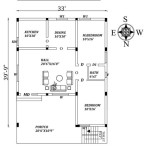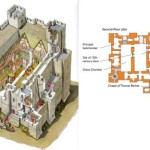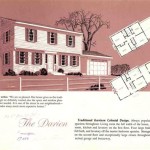How Do I Find Old Plans Of My House?
Locating old plans of a house can be an invaluable resource for homeowners. These plans, often referred to as blueprints, architectural drawings, or building permits, can provide critical information regarding the structure's original design, construction details, past renovations, and utilities. This information is particularly useful when considering renovations, repairs, or additions, as it allows for a more informed and efficient approach.
The process of finding these plans can vary depending on the age of the house, its location, and local record-keeping practices. It often requires persistence and a multi-pronged approach, examining various potential sources of information. Understanding the different avenues available and the type of information each source may hold is crucial for a successful search.
Local Government Archives and Building Departments
The most common and often most fruitful starting point for finding old house plans is the local government. Specifically, city hall, county records offices, and building departments are prime repositories for this type of documentation. Building departments are typically responsible for issuing permits for construction, renovation, and demolition. These permits often include copies of the architectural plans submitted for approval. The specific title of the department may vary; it could be called the "Planning and Zoning Department," "Department of Inspections," or a similar variation.
When contacting the building department, it is essential to have as much information about the property as possible. This would ideally include the full address, the year the house was built (or an estimated range), and any previous owners' names, if known. This information helps the records clerk locate the relevant files more efficiently. Be prepared to pay a nominal fee for copies of the plans if they are found.
The accessibility of these records can vary significantly. Some municipalities have digitized their records, making them readily available online through a searchable database. Others maintain paper records stored in physical archives. Accessing paper records may require an in-person visit to the archives, and it's advisable to call ahead to schedule an appointment and confirm the department's procedures for accessing historical documents. In some cases, older records might be stored off-site, requiring additional time for retrieval.
It's important to understand that the type and completeness of records may vary depending on the age of the house and local building codes at the time of construction. Older houses may have incomplete records or no records at all, particularly if they were built before formal permitting processes were established. Additionally, records may have been lost or damaged over time due to fire, flooding, or inadequate storage conditions.
Even if the original architectural plans are not available, the building department may still hold valuable information. Past permits for renovations, additions, or alterations can provide insights into the structural and mechanical systems of the house. These permits may include sketches or diagrams showing the changes made, which can be helpful even without the original plans.
Historical Societies and Local Libraries
Historical societies and local libraries can serve as valuable resources for uncovering information about a house's history, including clues that might lead to finding old plans. These institutions often maintain collections of historical documents, photographs, maps, and other materials related to the local area. While they may not directly hold architectural plans, they can provide contextual information that helps in the search.
Historical societies are typically non-profit organizations dedicated to preserving and promoting local history. They may have archives containing old maps, property records, and information about local architects and builders. These records can provide insights into the original construction of the house and any subsequent changes that were made. They may also have connections to local historians or researchers who possess knowledge about the area's architectural history.
Local libraries often have extensive collections of local history materials, including books, newspapers, and photographs. These resources can be helpful in researching the history of the neighborhood and identifying potential builders or architects who worked in the area. Old newspapers may contain advertisements for local builders and architects, which can provide leads for further investigation.
Genealogical research can also be a useful tool in tracing the history of a house. By researching the previous owners of the property, it may be possible to uncover documents or information that they retained, such as old plans or building permits. Genealogical databases and online resources can be helpful in this process.
When contacting historical societies and local libraries, be prepared to provide as much information about the house as possible, including its address, age, and any known previous owners. This will help the researchers narrow their search and identify relevant materials. Be aware that these institutions may have limited resources and staff, so patience and persistence are often required.
Title Companies and Real Estate Records
Title companies and real estate records can sometimes hold information related to a house's construction or past renovations. When a property is bought or sold, title companies conduct a search of public records to ensure clear ownership and identify any liens or encumbrances on the property. This search may uncover documents related to building permits, easements, or other agreements that could reference the house's original plans.
Real estate records, typically maintained by the county recorder's office, contain deeds, mortgages, and other documents related to property ownership. While these records may not directly include architectural plans, they can provide clues about the house's construction history. For example, a deed might reference a specific builder or architect, or it might mention a renovation or addition that required a building permit.
Accessing title company records can be more challenging than accessing public records because they are typically considered proprietary information. However, if a homeowner has recently purchased the property, they may be able to obtain copies of the title report and other documents from the title company that handled the transaction. These documents may contain references to building permits or other information that could lead to finding old plans.
When searching real estate records, it is helpful to have the property's legal description, which can be found on the deed or tax bill. This description is a precise identification of the property that is used in all legal documents. Having the legal description will make it easier to locate the relevant records in the county recorder's office.
It is important to note that the availability and accessibility of title company and real estate records can vary depending on local laws and regulations. Some records may be publicly accessible online, while others may require an in-person visit to the county recorder's office. Be prepared to pay a fee for copies of any documents you obtain.
Ultimately, finding old plans of a house is a process of investigation and discovery. There's no guarantee of success, but by systematically exploring these resources, homeowners can significantly increase their chances of uncovering valuable information about their property's history and design. The effort invested in this search can save time, money, and potential headaches when planning renovations, repairs, or additions.

How To Get Blueprints Of Your House

Vintage House Plans Old Houses For

Radford 1903 Free Classic Queen Anne With Wraparound Porch Farmhouse Floor Plans Country Style House Vintage

Nadler Model By Hodgson Spindled Queen Anne Style House Plan Victorian Plans Vintage

Plans From A 50s Called N House Garden Book Of Small Home Vintage How To Plan

Floor Planning For An Old American Foursquare Highland House Living

House Plans Floor Blueprints

House Plans Home Floor Great Customer Service

Vintage 1908 Bungalow Plan Western Home Builder

Home Wikipedia








